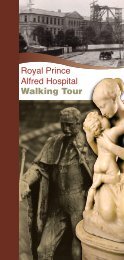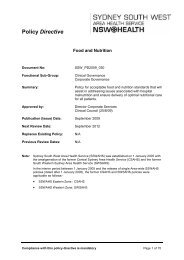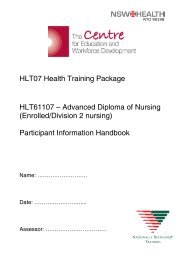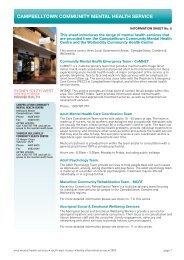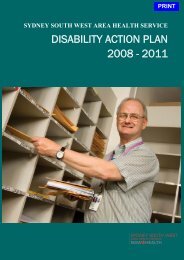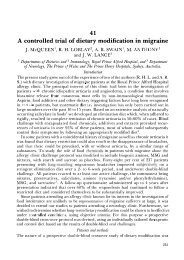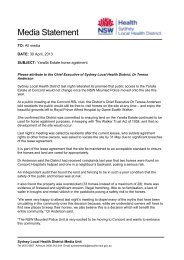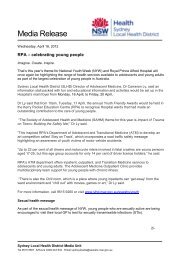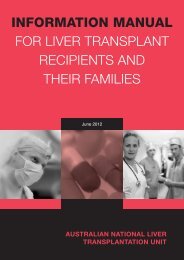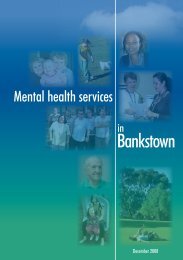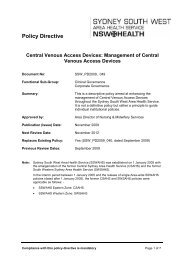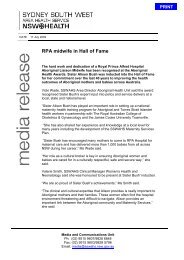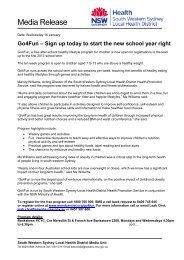Child Related Allegations, Charges and Convictions Against ...
Child Related Allegations, Charges and Convictions Against ...
Child Related Allegations, Charges and Convictions Against ...
You also want an ePaper? Increase the reach of your titles
YUMPU automatically turns print PDFs into web optimized ePapers that Google loves.
Policy DirectiveTitle: <strong>Child</strong> related allegations, charges <strong>and</strong> convictions.Before an investigation is conducted, there are a number of steps that need to betaken in order to protect the interests of the child <strong>and</strong> the employee.5.1 Recording the details of a child-related allegation or convictionWhere the allegation has not been received in writing, the allegation should berecorded to clarify what is being alleged. The words used by the person making theallegation must be recorded word for word, if possible, <strong>and</strong> clarified with the personmaking the verbal allegation.If it is necessary to seek clarification of a verbal allegation, ensure that the personmaking the allegation explains events in their own words. Asking leading questions(eg: Did he touch you there?) may compromise future criminal investigations.Details of any information received about a child-related charge or conviction shouldalso be recorded.5.2 Considering risk of harm to a child or class of childrenNSW Health Policy Directive 2005-299 Protecting <strong>Child</strong>ren <strong>and</strong> Young Peoplerequires Health Service employees to report to the DoCS ‘helpline’ any reasonablebelief that a person or class of persons under the age of 16 is ‘at risk of harm’.Under that Directive <strong>and</strong> section 24 of the <strong>Child</strong>ren <strong>and</strong> Young Persons (Care <strong>and</strong>Protection) Act 1998, a Health Service employee may also report concerns aboutrisk of harm to a person aged 16 or 17 (a young person) or class of young persons.Where a Health Service employee is concerned that a young person or class ofyoung persons is at risk of harm from abuse or neglect, they should make a report toDoCS.In assessing whether a child-related allegation, charge or conviction should bereported to DoCS, consideration needs to be given to whether the person who is thesubject of the allegation may continue to pose a risk to classes of children <strong>and</strong>young people (such as patients).For example, a report should be made to DoCS where a person who has previouslyabused a child works with children.If there are concerns about the immediate safety of a child or young person, a classof child or young person, or any other staff, patient or client, Health Serviceemployees should also contact Police (000) <strong>and</strong> security staff.According to Section 23 of the <strong>Child</strong>ren <strong>and</strong> Young Persons (Care <strong>and</strong> Protection)Act 1998, a child or young person is at risk of harm if current concerns exist for thesafety, welfare <strong>and</strong> well-being of the child or young person because of the presenceof one or more of the following circumstances:• The child or young person has been or is at risk of being physically or sexuallyassaulted or ill-treated;• The child or young person’s basic physical or psychological needs are notbeing met or are at risk of not being met;• The parents or other caregivers have not arranged <strong>and</strong> are unable or unwillingto arrange for the child or young person to receive necessary medical care;• The child or young person is living in a household where there have beenincidents of domestic violence <strong>and</strong>, as a consequence, the child young personis at risk of serious physical or psychological harm; or,page 12 of 24



